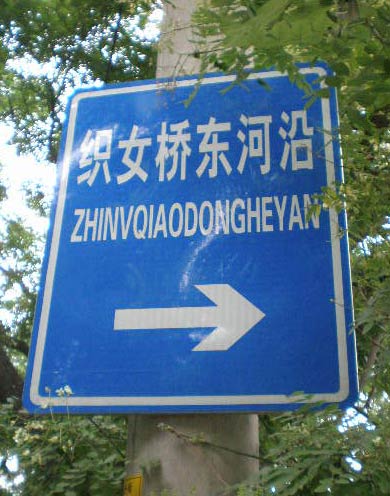As most people reading this blog know, Mandarin has about 1,300 syllables (interjections and loan words complicate the count a little). If tones — a basic part of the language — are disregarded, the number of drops to 400 and something syllables.
Given 410 or so basic syllables and 4 tones — one of these days I need to write something more on the wrongful neglect of the so-called neutral tone — some people might expect there to be more like 1,640 syllables instead of about 1,300. The reason for the lower number is that not all syllables exist in all four tones. For example, quite clearly the official language of Zhōngguó does not lack zhōng … or zhǒng or zhòng. But zhóng is another matter.
So not all possible tonal variations of those 400-something syllables appear in modern standard Mandarin. But what about letters?
If you look at the official alphabet for Hanyu Pinyin, it’s exactly the same as that for English (other than in pronunciation, of course), which is a bit odd, especially considering that Pinyin doesn’t use the letter v (or at least isn’t supposed to for Mandarin words).
So in this case, I’m excluding v but otherwise being expansionist about the glyphs I’m calling letters. To be specific: I’m referring to a-z, minus v, but including ā, á, ǎ, à, ē, é, ě, è, ī, í, ǐ, ì, ō, ó, ǒ, ò, ū, ú, ǔ, ù, ü, ǖ, ǘ, ǚ, and ǜ. (Even though Ī, Í, Ǐ, Ì, Ū, Ú, Ǔ, Ù, Ü, Ǖ, Ǘ, Ǚ, and Ǜ never come at the beginning of a word, let’s not automatically eliminate them, because there is an occasional need for ALL CAPS.)
Are there any of those possible glyphs that don’t appear at all — at least as given in the large ABC Comprehensive Chinese-English Dictionary?
The answer, perhaps surprisingly, is yes.
Which letter is it?
Have you made your choice?
It doesn’t take much thought to eliminate C as the answer. “Nǚ” (woman) is one of those first-couple-of-Mandarin-lessons vocabulary terms. And the word for green (lǜsè) is hardly obscure either. It might be harder to think of a word with the letter ǘ; but there are some. Donkey (lǘ) is probably the most common. So the answer is A: ǖ.
It’s important to note that the lack of ǖ is in appearance only. The sound ǖ occurs in plenty of Mandarin words; it’s just that Pinyin’s simplified orthography calls for writing “u” instead where ǖ follows j, q, x, or y.
But even though I didn’t find an example of ǖ, I’d encourage font designers not to scratch it from their list of must-have glyphs for Pinyin faces, especially since teachers will no doubt want to continue giving tone-pattern drills based on four tones for all vowels, regardless. Also, someone with a searchable edition of the Hanyu Da Cidian or maybe the new Oxford online edition is probably about to use the comments to point me to some obscure entry there….

